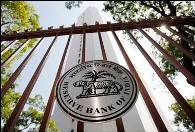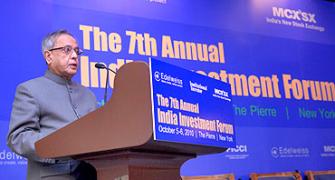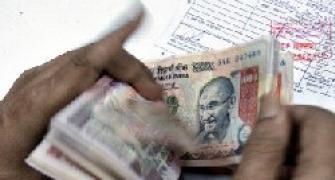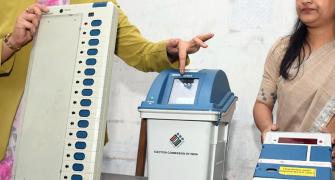 Leading economists have welcomed the Reserve Bank measures to ease liquidity and described the decision to leave all its key rates unchanged as on "expected lines and to help build the continuing growth momentum by not choking the system of money supply."
Leading economists have welcomed the Reserve Bank measures to ease liquidity and described the decision to leave all its key rates unchanged as on "expected lines and to help build the continuing growth momentum by not choking the system of money supply." "As expected RBI maintained status quo on rates, while infusing liquidity. On a broader framework, it may have to consider revising its operating framework for monetary policy to keep call money rates in corridor and make any change in future policy rates more effective," Ernst & Young India national leader-global financial services Ashvin
Parekh told PTI.
On SLR cut, he said, "a considerable gap in the banks' deposit (14 per cent) and credit (22.6 per cent) growth is a key factor behind the liquidity squeeze since September.
RBI decision to inject permanent liquidity support by reducing SLR and conducting open market operations worth Rs 48,000 crore would help ease the crunch and bring down the call rates from the current high 6.67 per cent."
Crisil director and chief economist Dharmakriti Joshi hailed the steps to ease liquidity saying "it's welcome that RBI has not changed its policy stance. My broad sense is that RBI doesn't want to choke the system and arrest growth, hence SLR cut and bond buyback."
Fitch Ratings associate director DK Pant also opined that review was as on expected lines paused on policy front because of steadily falling headline inflation.
As indicated at the last policy review on November 2, RBI earlier in the day left its short-term lending and borrowing rates (repo and reverse repo respectively) unchanged at 6.25 and 5.25 per cent, and retained the percentage of cash balance that banks have to park with it or CRR at 6 per cent.
However, to ease the severe liquidity crunch, it cut the statutory liquidity ratio (SLR) by 1 per cent to 24 per cent, releasing Rs 48,000 crore into the system daily. That apart, it also announced buyback government bonds, which will also ease liquidity crunch by a similar amount.
This is the first time that RBI has not increased the key rates, after doing so six times in a row since since January to normalise the monetary policy stance that was relaxed to help revive the economy that was hit by the global financial meltdown of 2007-08.
Banks have been borrowing a hefty 1-1.3 lakh crore from the second liquidity adjustment window (LAF) everyday for quite some time now as liquidity has almost completely vanished from the system, shooting up call money rates by over eight per cent last week.
Leading rating agency Icra managing director Naresh Takkar said, with improved transmission of previous tightening measures and the recent rise in deposit and lending rates by banks and a falling inflation, RBI seems to have adopted a wait-and-watch policy on inflation and has focussed more on liquidity management in the mid-quarter review.
"The steps announced today should ease liquidity substantially and bring the volume under the LAF close to RBI's comfort zone. With RBI reiterating its concerns regarding high inflation level and based on our projections for headline inflation, we expect RBI to spike policy rates by 25-50 bps in the next quarter," Takkar said.
However, Dun & Bradstreet India senior economist Arun Singh doubted whether the SLR cut will really help ease liquidity.








